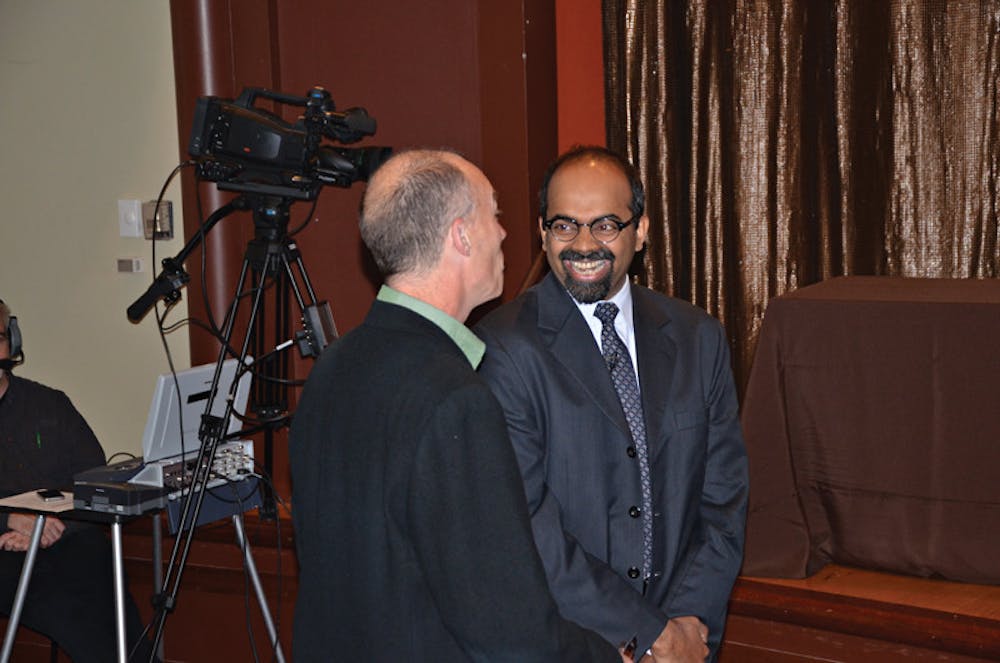Many different processes in nature can be understood through similar mathematical principles, said L. Mahadevan, professor of applied mathematics, biology and physics at Harvard, in a lecture to a mostly full Salomon 101 Tuesday night.
His talk is part of a series of lectures around the world, entitled “Mathematics of Planet Earth 2013,” that concern the interactions between mathematics and nature.
“A lot of people think of science in terms of big complicated questions, but some of the absolute greatest problems start with very simple questions,” said Peter Jones, professor of mathematics and applied mathematics at Yale, when introducing Mahadevan.
Mahadevan answered four such simple questions from his own research about biological forms — how tubes grow, how tendrils coil, how leaves ripple and how guts loop and fold.
The first problem Mahadevan addressed was how the tubes of pollen elongate on their journey to fertilize a flower. The mechanism is similar to blowing up a balloon, he said, but with one crucial difference — pollen tubes elongate instead of becoming spheres.
This occurs because cell processes inside the tubes allow them to act as “molds,” bending the same way as glass does when it is blown into shapes like test tubes, he said. The work could be medically significant because some antibiotics work by influencing the cell walls of bacteria, Mahadevan added.
Mahadevan then discussed another plant process, this time on the macro scale. After showing a time-lapse video of a tendril coiling around bamboo, he demonstrated the same mechanical principles with human-made objects — a telephone cord, a sheet of paper and a coil with two different layers.
Mahadeven used the cord to represent the coiling tendril, and he wet the paper to show how it bends depending on the direction of its fibers. He then showed how a coil composed of two different materials could wind when stretched, mimicking a type of spring discovered by climbing plants.
On the same plant scale, Mahadevan presented the problem of how leaves ripple, which is puzzling, he said, because “there is one way of flat and infinite ways of not flat.” By studying mutant leaves of the Antirrhinum plant, he and collaborators were able to develop a mathematical model of leaf-rippling. Again using simple props, he showed how a flat piece of foam ripples depending on how pressure is applied and related the principle to how flowers bloom.
Mahadevan concluded with the flesh-and-blood problem of how intestines form their characteristic loops. Experiments showed the problem is not as simple as “packing” the intestine to fit an enclosed space, he said. Instead, a structure called the mesentery acts as a “master puppeteer” by mechanically directing its development. He modeled the situation simply with a latex sheet and a rubber tube.
Mahadevan confessed the four examples he presented were “tiny,” but he said he considers them “cause for hope” for the future of mathematics in biology.
Jesus Leyva ’16 called the lecture “awe-inspiring,” saying it showed how mathematics can be used everywhere.

ADVERTISEMENT




